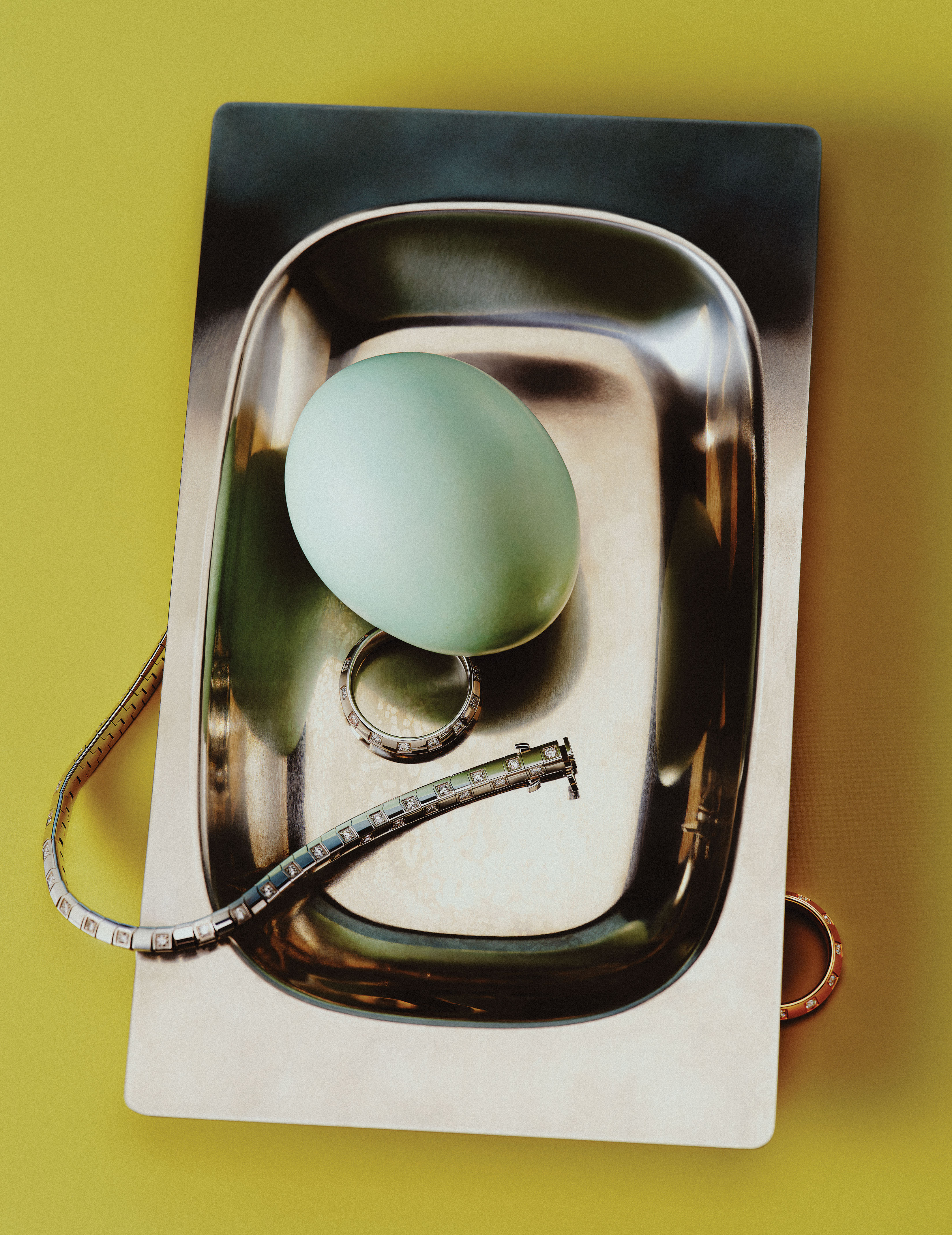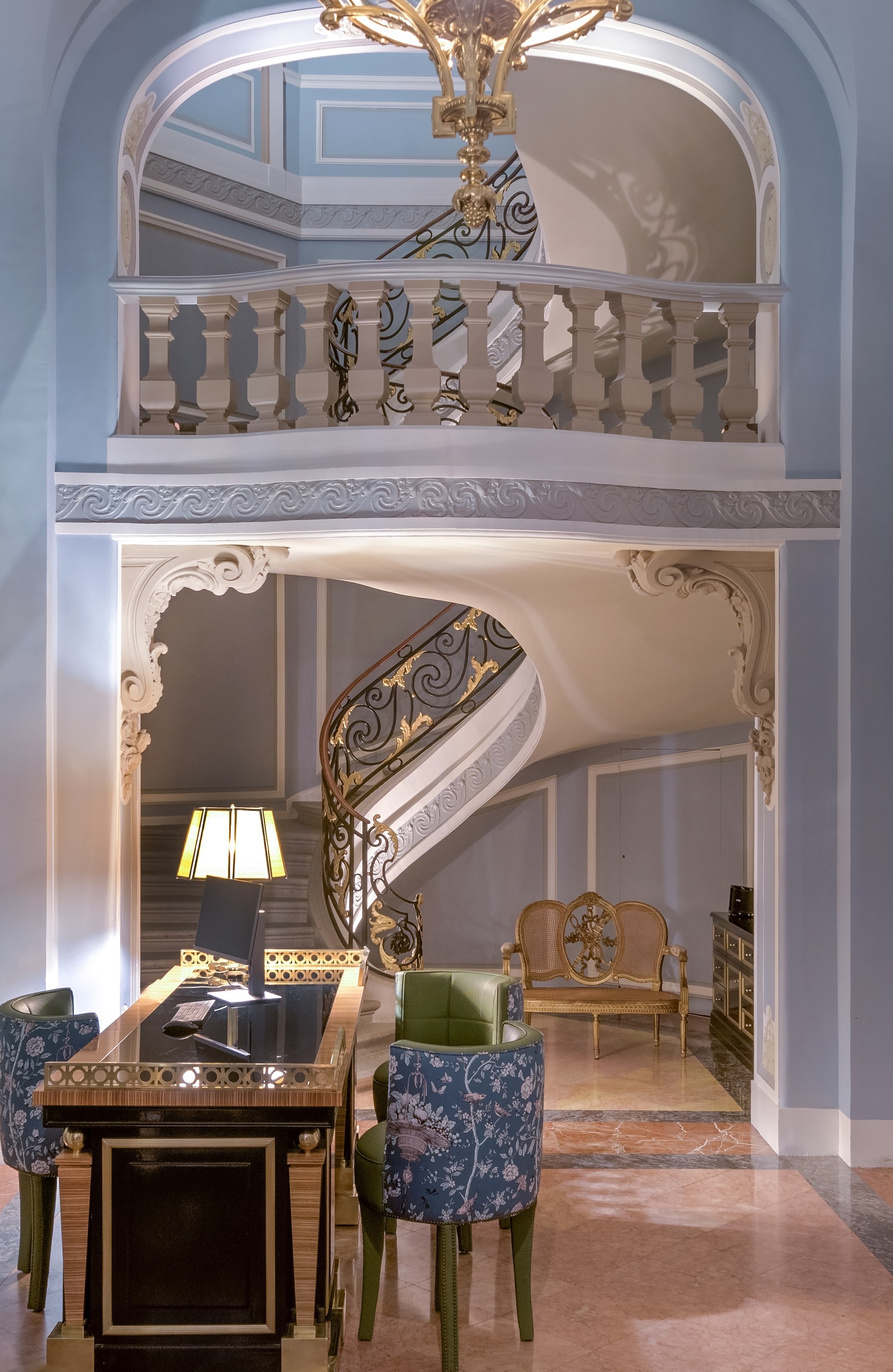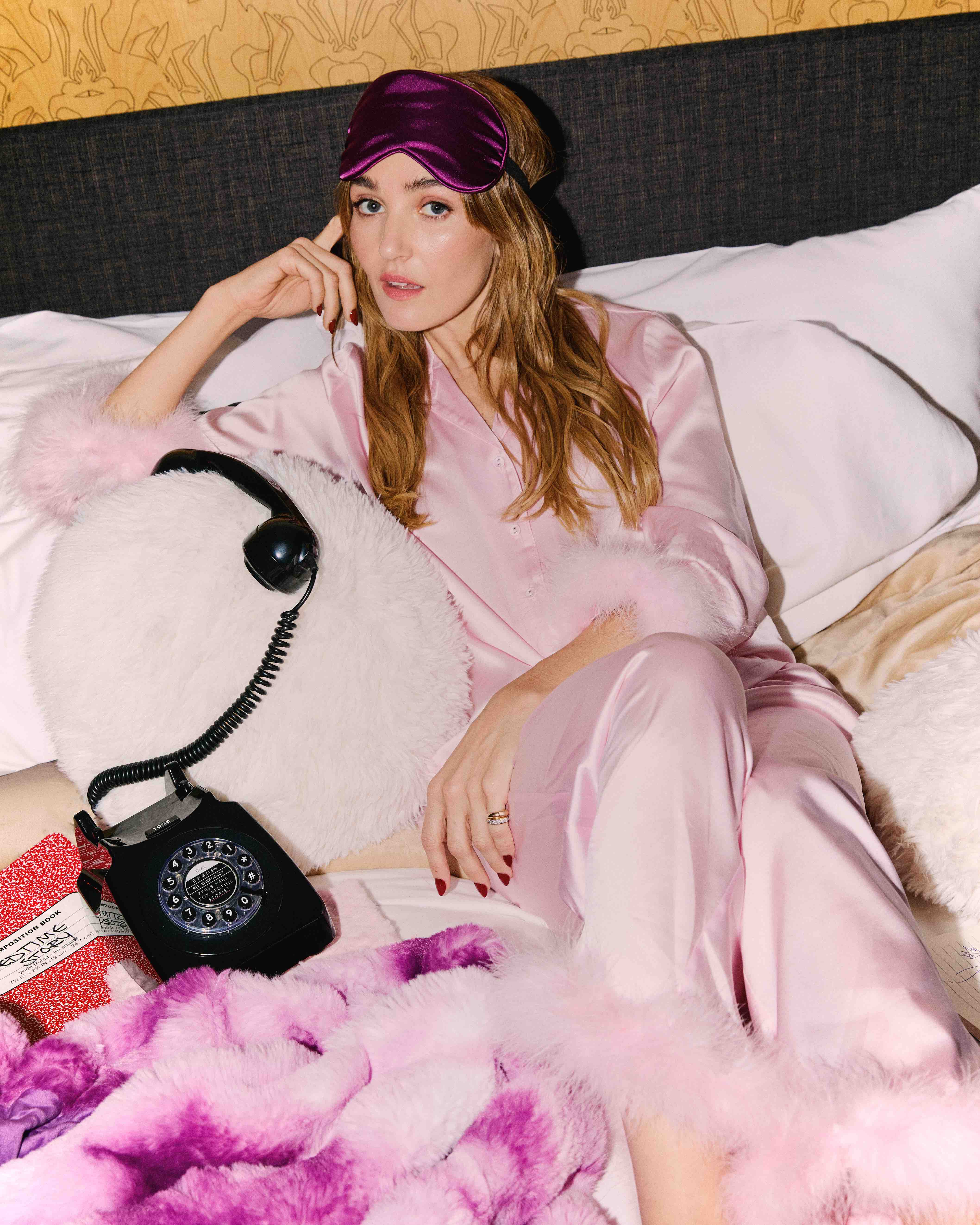





Mack Sennett Studios
History Will Be Kind To Me For I Intend To Write It
In the Silver Lake neighborhood of Los Angeles, across from a middle school and a hair salon, kitty-corner to a liquor store and a Laundromat and an Indian café advertising some kind of “6 COURSE LUNCH COMBINATION,” stands an iconic Hollywood film stage. This is Mack Sennett Studios, founded by Mr. Sennett back in 1912 under the name Keystone Studios. Keystone was a silent-era boomhouse; bumbling cops, Charlie Chaplin, custard pies in the face for Fatty Arbuckle.
As a showman, Mr. Sennett surrounded himself with a rookery of bathing beauties, aptly called the _Sennett Bathing Beauties_—wannabe actresses who’d occasionally appear wearing scandalous onesies in film shorts or beach tradeshows. You might even say that, as a showman, Mr. Sennett had binders full of women. You might even say that, as a showman, Mr. Sennett had it all figured out.
One of these was none other than Mabel Normand, whom Mr. Sennett made his flagship at Keystone as well as his main squeeze. And when Normand caught Sennett bathing with another beauty, she was guilt-gifted Keystone Studios, her very own Silver Lake sound stage. On this stage, they shot _Mickey_, the highest-grossing film of 1918. Soon after, Normand left Sennett and Keystone for MGM (and fell from grace amidst murmurings that the cocaine-addicted actress had hired contract killers to assassinate her lover, director William Desmond Taylor). Keystone then shifted its gears and started shooting cowboy flicks, the wide-open prairie of Silver Lake as the backdrop.
I get all this information from President and Producer of Mack Sennett Studios, Jesse Rogg. He enthusiastically narrates the building’s history, beaming, filling in details with every flick of a light switch (which illuminate bulbs they’ve placed in salvaged 1920s camera lenses rifled from the basement, which they then turned into sconces for the Stage 2 makeup room); every turn of a page in the old bookkeeping ledgers (“Someone,” Rogg notes, “had beautiful handwriting.”); and each framed aerial photo showing the physical evolution of the property itself.
“I used to drive by this building every day,” Rogg says, “but I didn’t know how historical it was.”
About a year ago, Rogg was looking for an artistic studio space. He spotted a FOR SALE posting for Mack Sennett, and three minutes later he'd made an appointment. Just like that.
“By nature, studios are exclusive,” he says. “But I wanted to create an inclusive space that directly engaged with the surrounding community.” Rogg and his team of creatives are involved with neighborhood cleanup, craft fairs, city council meetings, and fundraisers for local schools. And speaking of giving back, this is the studio where the infamously nude and nubile “Blurred Lines” music video was shot, where the filmmakers of _Her_ had their triumphant Oscar party (the Oscar party at which writer-director Spike Jonze briefly misplaced his Oscar), where Pussy Riot held a benefit panel discussion on their virginal visit to L.A., among many others.
“The scope of things we try to do is as vast as we can dream up,” says Rogg (who himself was nominated for a Grammy, producing Sam Sparro’s hit single “Black and Gold”). “We want to have the stage booked every day. We won’t be idle. If we have a last-minute cancellation, we’ll open it up to our own music students, or AFI students.”
It’s clear that Rogg envisions consistent shifts in pace while maintaining forward momentum and a reverence for the local past.
“L.A. is hitting a creative resurgence,” he says. “We’re in a creative renaissance. I think people will look back at this time in the city and want to time-capsule it, just like how we have, with the past, here.”
* * *
Written by Brian Formo
 

 

 
Mack Sennett Studios
History Will Be Kind To Me For I Intend To Write It
In the Silver Lake neighborhood of Los Angeles, across from a middle school and a hair salon, kitty-corner to a liquor store and a Laundromat and an Indian café advertising some kind of “6 COURSE LUNCH COMBINATION,” stands an iconic Hollywood film stage. This is Mack Sennett Studios, founded by Mr. Sennett back in 1912 under the name Keystone Studios. Keystone was a silent-era boomhouse; bumbling cops, Charlie Chaplin, custard pies in the face for Fatty Arbuckle.
As a showman, Mr. Sennett surrounded himself with a rookery of bathing beauties, aptly called the _Sennett Bathing Beauties_—wannabe actresses who’d occasionally appear wearing scandalous onesies in film shorts or beach tradeshows. You might even say that, as a showman, Mr. Sennett had binders full of women. You might even say that, as a showman, Mr. Sennett had it all figured out.
One of these was none other than Mabel Normand, whom Mr. Sennett made his flagship at Keystone as well as his main squeeze. And when Normand caught Sennett bathing with another beauty, she was guilt-gifted Keystone Studios, her very own Silver Lake sound stage. On this stage, they shot _Mickey_, the highest-grossing film of 1918. Soon after, Normand left Sennett and Keystone for MGM (and fell from grace amidst murmurings that the cocaine-addicted actress had hired contract killers to assassinate her lover, director William Desmond Taylor). Keystone then shifted its gears and started shooting cowboy flicks, the wide-open prairie of Silver Lake as the backdrop.
I get all this information from President and Producer of Mack Sennett Studios, Jesse Rogg. He enthusiastically narrates the building’s history, beaming, filling in details with every flick of a light switch (which illuminate bulbs they’ve placed in salvaged 1920s camera lenses rifled from the basement, which they then turned into sconces for the Stage 2 makeup room); every turn of a page in the old bookkeeping ledgers (“Someone,” Rogg notes, “had beautiful handwriting.”); and each framed aerial photo showing the physical evolution of the property itself.
“I used to drive by this building every day,” Rogg says, “but I didn’t know how historical it was.”
About a year ago, Rogg was looking for an artistic studio space. He spotted a FOR SALE posting for Mack Sennett, and three minutes later he'd made an appointment. Just like that.
“By nature, studios are exclusive,” he says. “But I wanted to create an inclusive space that directly engaged with the surrounding community.” Rogg and his team of creatives are involved with neighborhood cleanup, craft fairs, city council meetings, and fundraisers for local schools. And speaking of giving back, this is the studio where the infamously nude and nubile “Blurred Lines” music video was shot, where the filmmakers of _Her_ had their triumphant Oscar party (the Oscar party at which writer-director Spike Jonze briefly misplaced his Oscar), where Pussy Riot held a benefit panel discussion on their virginal visit to L.A., among many others.
“The scope of things we try to do is as vast as we can dream up,” says Rogg (who himself was nominated for a Grammy, producing Sam Sparro’s hit single “Black and Gold”). “We want to have the stage booked every day. We won’t be idle. If we have a last-minute cancellation, we’ll open it up to our own music students, or AFI students.”
It’s clear that Rogg envisions consistent shifts in pace while maintaining forward momentum and a reverence for the local past.
“L.A. is hitting a creative resurgence,” he says. “We’re in a creative renaissance. I think people will look back at this time in the city and want to time-capsule it, just like how we have, with the past, here.”
* * *
Written by Brian Formo

Mack Sennett Studios
History Will Be Kind To Me For I Intend To Write It
In the Silver Lake neighborhood of Los Angeles, across from a middle school and a hair salon, kitty-corner to a liquor store and a Laundromat and an Indian café advertising some kind of “6 COURSE LUNCH COMBINATION,” stands an iconic Hollywood film stage. This is Mack Sennett Studios, founded by Mr. Sennett back in 1912 under the name Keystone Studios. Keystone was a silent-era boomhouse; bumbling cops, Charlie Chaplin, custard pies in the face for Fatty Arbuckle.
As a showman, Mr. Sennett surrounded himself with a rookery of bathing beauties, aptly called the _Sennett Bathing Beauties_—wannabe actresses who’d occasionally appear wearing scandalous onesies in film shorts or beach tradeshows. You might even say that, as a showman, Mr. Sennett had binders full of women. You might even say that, as a showman, Mr. Sennett had it all figured out.
One of these was none other than Mabel Normand, whom Mr. Sennett made his flagship at Keystone as well as his main squeeze. And when Normand caught Sennett bathing with another beauty, she was guilt-gifted Keystone Studios, her very own Silver Lake sound stage. On this stage, they shot _Mickey_, the highest-grossing film of 1918. Soon after, Normand left Sennett and Keystone for MGM (and fell from grace amidst murmurings that the cocaine-addicted actress had hired contract killers to assassinate her lover, director William Desmond Taylor). Keystone then shifted its gears and started shooting cowboy flicks, the wide-open prairie of Silver Lake as the backdrop.
I get all this information from President and Producer of Mack Sennett Studios, Jesse Rogg. He enthusiastically narrates the building’s history, beaming, filling in details with every flick of a light switch (which illuminate bulbs they’ve placed in salvaged 1920s camera lenses rifled from the basement, which they then turned into sconces for the Stage 2 makeup room); every turn of a page in the old bookkeeping ledgers (“Someone,” Rogg notes, “had beautiful handwriting.”); and each framed aerial photo showing the physical evolution of the property itself.
“I used to drive by this building every day,” Rogg says, “but I didn’t know how historical it was.”
About a year ago, Rogg was looking for an artistic studio space. He spotted a FOR SALE posting for Mack Sennett, and three minutes later he'd made an appointment. Just like that.
“By nature, studios are exclusive,” he says. “But I wanted to create an inclusive space that directly engaged with the surrounding community.” Rogg and his team of creatives are involved with neighborhood cleanup, craft fairs, city council meetings, and fundraisers for local schools. And speaking of giving back, this is the studio where the infamously nude and nubile “Blurred Lines” music video was shot, where the filmmakers of _Her_ had their triumphant Oscar party (the Oscar party at which writer-director Spike Jonze briefly misplaced his Oscar), where Pussy Riot held a benefit panel discussion on their virginal visit to L.A., among many others.
“The scope of things we try to do is as vast as we can dream up,” says Rogg (who himself was nominated for a Grammy, producing Sam Sparro’s hit single “Black and Gold”). “We want to have the stage booked every day. We won’t be idle. If we have a last-minute cancellation, we’ll open it up to our own music students, or AFI students.”
It’s clear that Rogg envisions consistent shifts in pace while maintaining forward momentum and a reverence for the local past.
“L.A. is hitting a creative resurgence,” he says. “We’re in a creative renaissance. I think people will look back at this time in the city and want to time-capsule it, just like how we have, with the past, here.”
* * *
Written by Brian Formo


















